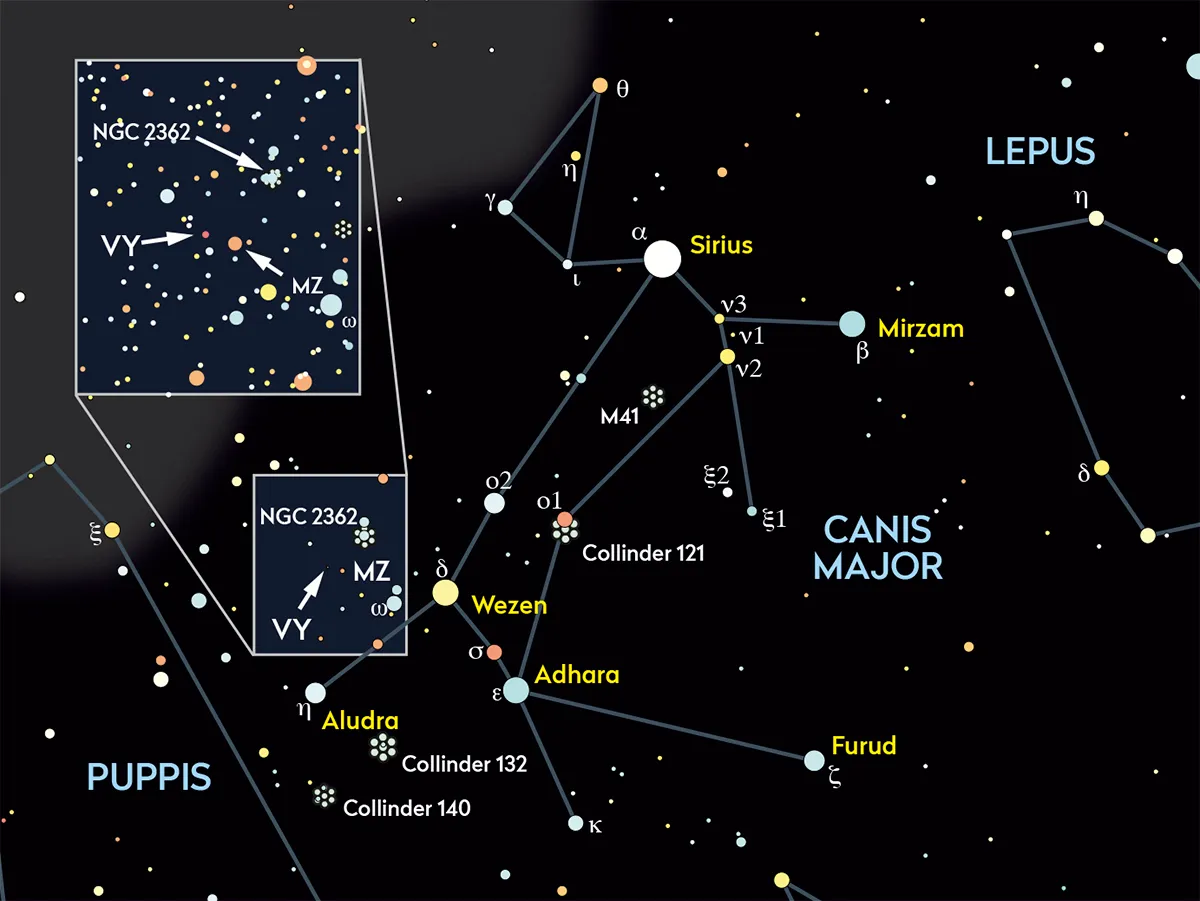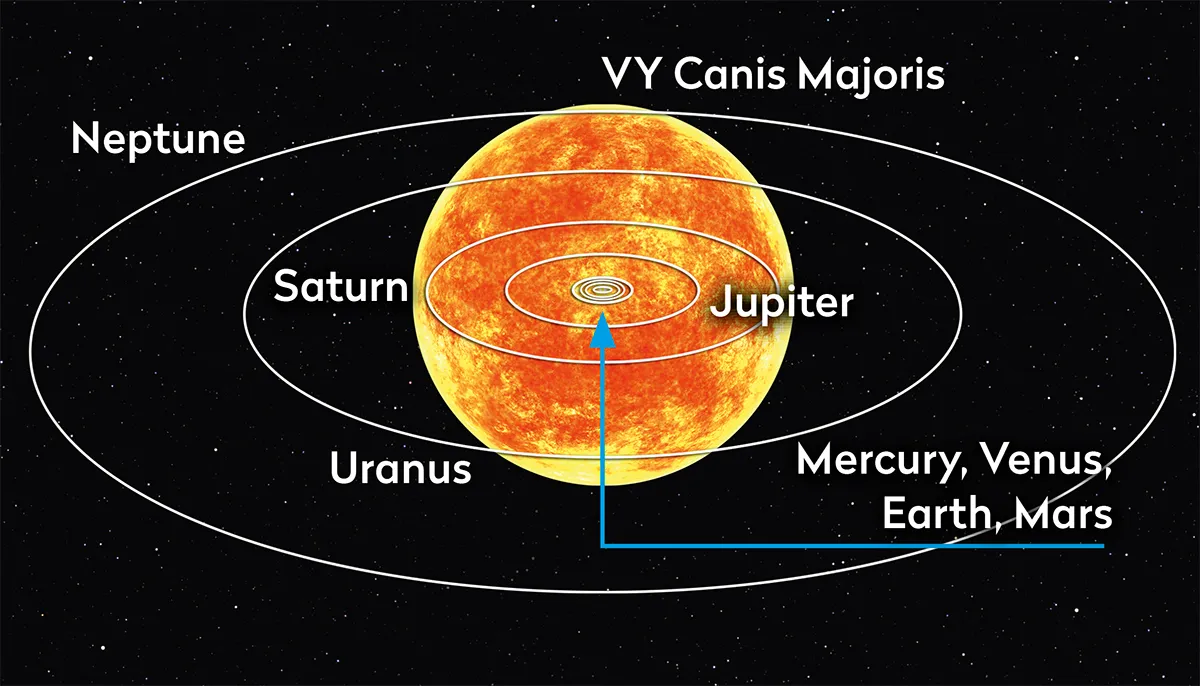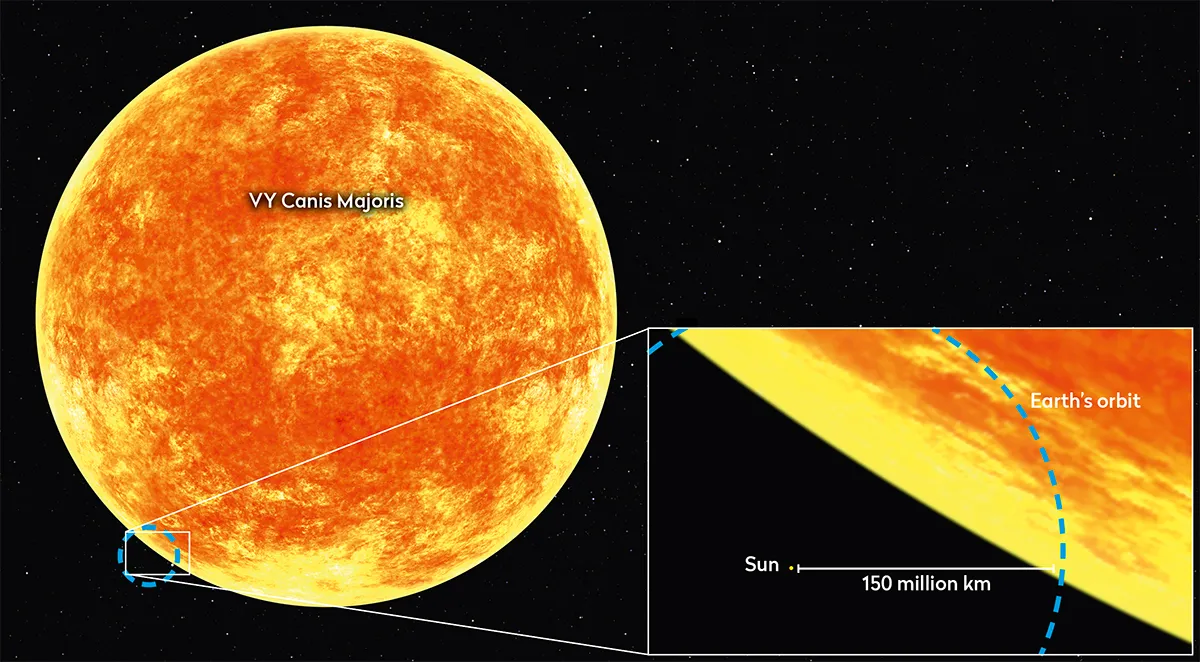The celestial beasts known as hypergiant stars are truly colossal in size, and VY Canis Majoris is one of the biggest that we know of.
The biggest hypergiants would be able to squeeze 10 billion of our Suns inside, or 14 quadrillion Earths.
Truly, the staggering size of these largest of stars is hard to comprehend.
To really understand just how big these stars are, we've taken a look at one of the most famous hypergiant stars, which is also one the biggest stars in the Universe.
Discover more mind-blowing science in our guides to the biggest objects in the Universe and the weirdest stars in the Universe.

VY Canis Majoris is a red hypergiant star that can be seen in the constellation of Canis Major, the Great Dog.
You can find out how to locate its position in our star chart above. As you can see, it takes a bit of precision star-hopping to pinpoint its exact location.
How does its size compare to our own host star, the Sun?
You could fit at least 1,420 Suns across its face, making its total diameter close to 2 billion kilometres.
Some estimates put this hypergiant star at over 2,000 Suns across, or almost 3 billion kilometres wide.

Earth orbits a mere 150 million kilometres from the Sun, meaning VY Canis Majoris is at least 13 times wider than the Earth–Sun distance.
It would take almost 3 billion Suns to fill up VY Canis Majoris.
Even Mercury, the smallest planet, can only fit inside the Sun 21 million times. A supergiant star like Betelgeuse would fit inside the hypergiant 8 times over.
However, that's nothing compared to UY Scuti, considered to be the biggest star in the Universe, which is so big you could fit about 5 billion Suns inside it!
Truly, when we get to this class of stellar hypergiants, the dimensions and physics involved are utterly mind-boggling.

These stars are so huge, we can even talk about their size in terms of the speed of light!
Despite travelling at around 300,000 kilometres per second, it would take a beam of light as much as 6 hours to complete one journey around the circumference of VY Canis Majoris.
That’s about the same amount of time it took for photos of Kuiper Belt Object Arrokoth to travel back to Earth from NASA’s New Horizons probe.
This guide originally appeared in the May 2023 issue of BBC Sky at Night Magazine.

